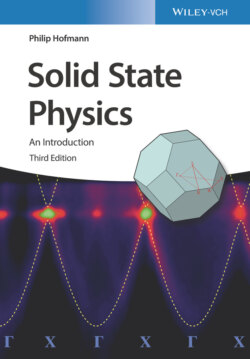Читать книгу Solid State Physics - Philip Hofmann - Страница 29
1.3.2 Other Methods for Structure Determination
ОглавлениеWhile X‐ray diffraction is arguably the most widespread and most powerful method for structure determination, other techniques are used as well. Similar diffraction experiments can be carried out by making use of the wave character of neutrons or electrons. The former interact very weakly with matter because they carry no electric charge. They are also more difficult to produce than X‐rays. However, the use of neutrons has two distinct advantages over X‐rays: First, their interaction with light atoms is stronger than that of X‐rays, and second, they possess a magnetic moment, which means that they can interact with any magnetic moments in the solid, allowing one to determine its magnetic order. Electrons, on the other hand, have the advantages that they are easy to produce and that one can use electron‐optical imaging techniques, whereas making optical elements for X‐rays is very difficult. On the other hand, their very strong interaction with matter causes a breakdown of the kinematic approximation, that is, multiple scattering events have to be taken into account. Because of their strong interaction with matter, low‐energy electrons do not penetrate deeply into crystals. Therefore, they are more appropriate for surface structure determination.
